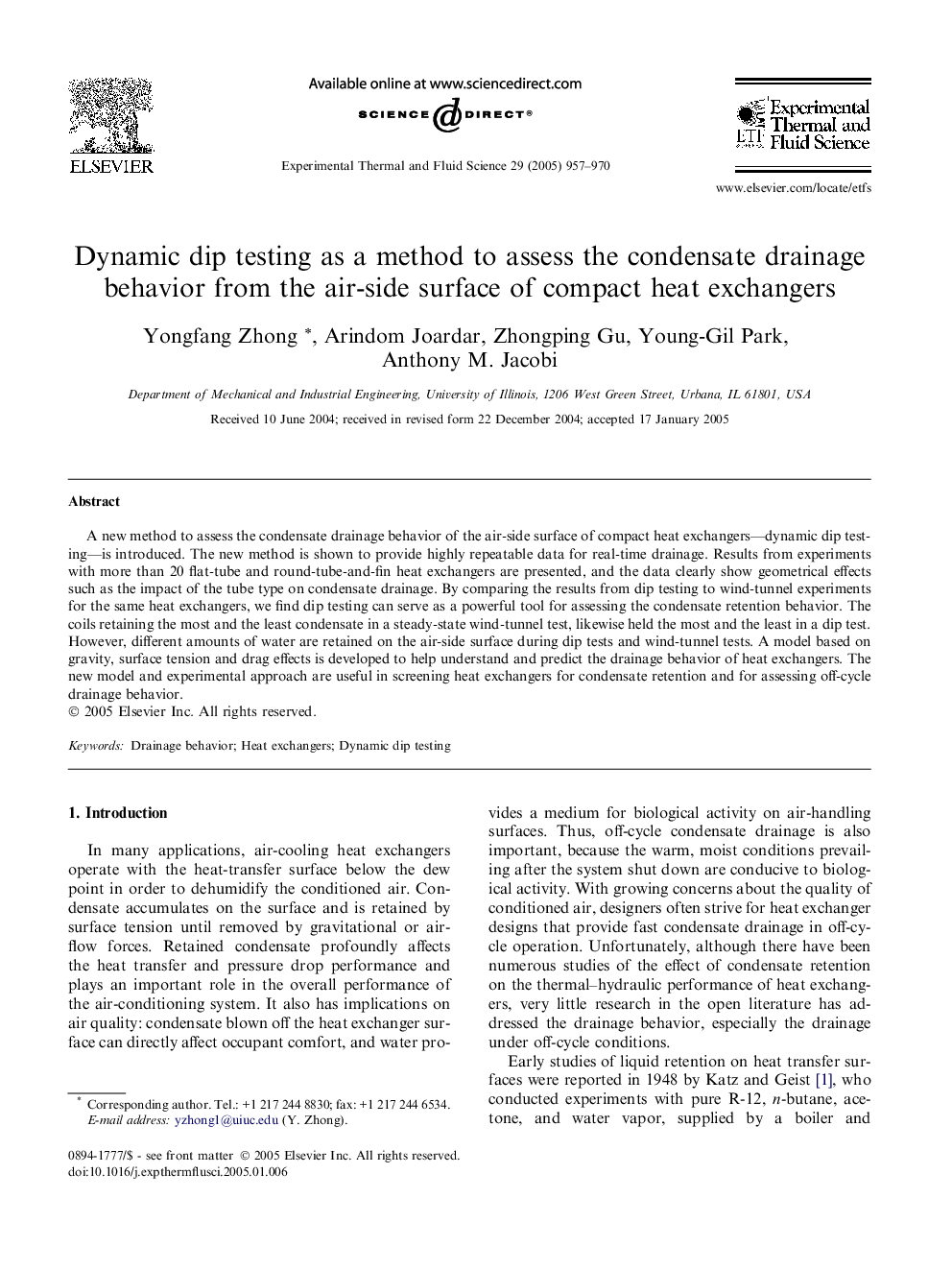| Article ID | Journal | Published Year | Pages | File Type |
|---|---|---|---|---|
| 10392137 | Experimental Thermal and Fluid Science | 2005 | 14 Pages |
Abstract
A new method to assess the condensate drainage behavior of the air-side surface of compact heat exchangers-dynamic dip testing-is introduced. The new method is shown to provide highly repeatable data for real-time drainage. Results from experiments with more than 20 flat-tube and round-tube-and-fin heat exchangers are presented, and the data clearly show geometrical effects such as the impact of the tube type on condensate drainage. By comparing the results from dip testing to wind-tunnel experiments for the same heat exchangers, we find dip testing can serve as a powerful tool for assessing the condensate retention behavior. The coils retaining the most and the least condensate in a steady-state wind-tunnel test, likewise held the most and the least in a dip test. However, different amounts of water are retained on the air-side surface during dip tests and wind-tunnel tests. A model based on gravity, surface tension and drag effects is developed to help understand and predict the drainage behavior of heat exchangers. The new model and experimental approach are useful in screening heat exchangers for condensate retention and for assessing off-cycle drainage behavior.
Keywords
Related Topics
Physical Sciences and Engineering
Chemical Engineering
Fluid Flow and Transfer Processes
Authors
Yongfang Zhong, Arindom Joardar, Zhongping Gu, Young-Gil Park, Anthony M. Jacobi,
